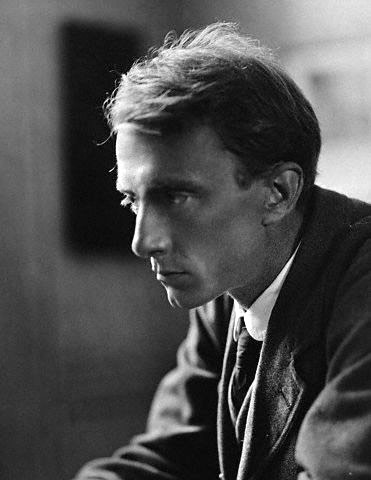Edward Thomas (1878–1917) is celebrated for his lyrical nature poetry, but many people may not be aware of his interest in Richmond Park as a young man.
Renewed interest in his life in recent years has seen All Roads Lead to France winning Matthew Hollis the Costa biography award in 2012, with Jean Moorcroft Wilson’s biography Edward Thomas: from Adlestrop to Arras following in 2015. Acclaimed nature writer, Robert MacFarlane wrote in his bestselling travelogue The Old Ways, “Of the dozens of people who feature in this book, Edward Thomas is the most important”.
Edward Thomas did not begin his literary career as a poet – that was to come later. He was born in Lambeth in 1878 and when a pupil at St Paul’s School met literary journalist James Ashcroft Noble in 1894. Noble encouraged him to pursue his ambition to be a writer and A Woodland Life, with his help, was published just a few years later in 1897, when Thomas was just 18 years old. This collection of prose includes a chapter about Richmond Park, depicting the landscape and its inhabitants on a winter’s day. It begins with this evocative opening:
“A keen frost and a grey hanging fog have numbed and silenced all life within the Park. Not a sound trembles through the heavy air. The rooks that travel over, each day at dawn, linger yet in their roosting-trees, and no sullen caw reaches us from their dark forms high up in the elms.”
Further observations of the natural life in the Park are noted in another chapter entitled A Diary in English Fields and Woods.
Thomas disliked London and he lived with his family first in Sevenoaks, Kent, and then, from 1906, in Steep, Hampshire. However, the relationship with his wife Helen and his children was a difficult one and Thomas spent long periods of time away from home.
He earned a modest living as a literary critic, essayist and biographer but was, however, critical of his own work, considering himself to be a “hack”. In 1913 he met the American poet, Robert Frost, and they became close friends, often walking together in the Gloucestershire countryside where Frost lived. Urged by Frost to turn to poetry, Thomas began to write poems in 1914. He wrote over 140 (only a handful of which he lived to see in print) between then and his untimely death at the Battle of Arras in 1917.
He captured the spirit of countryside most famously in his poem “Adlestrop”, describing an uneventful yet haunting train journey in Gloucestershire on a summer’s day a century ago. Biographer Michael Hollis writes of his work, “Thomas brought a unique eye to the English landscape at a moment when it was facing irreversible change. His work seems distinctly modern in its recognition of the interdependence of human beings and the natural world, more closely attuned to our own ecological age than that of the First World War.”
A copy of A Woodland Life is in the Hearsum Collection. You can read the chapter “A Winter’s Day in Richmond Park” together with diary entries that include references to Richmond Park in “A Diary in English Fields and Woods” here.

